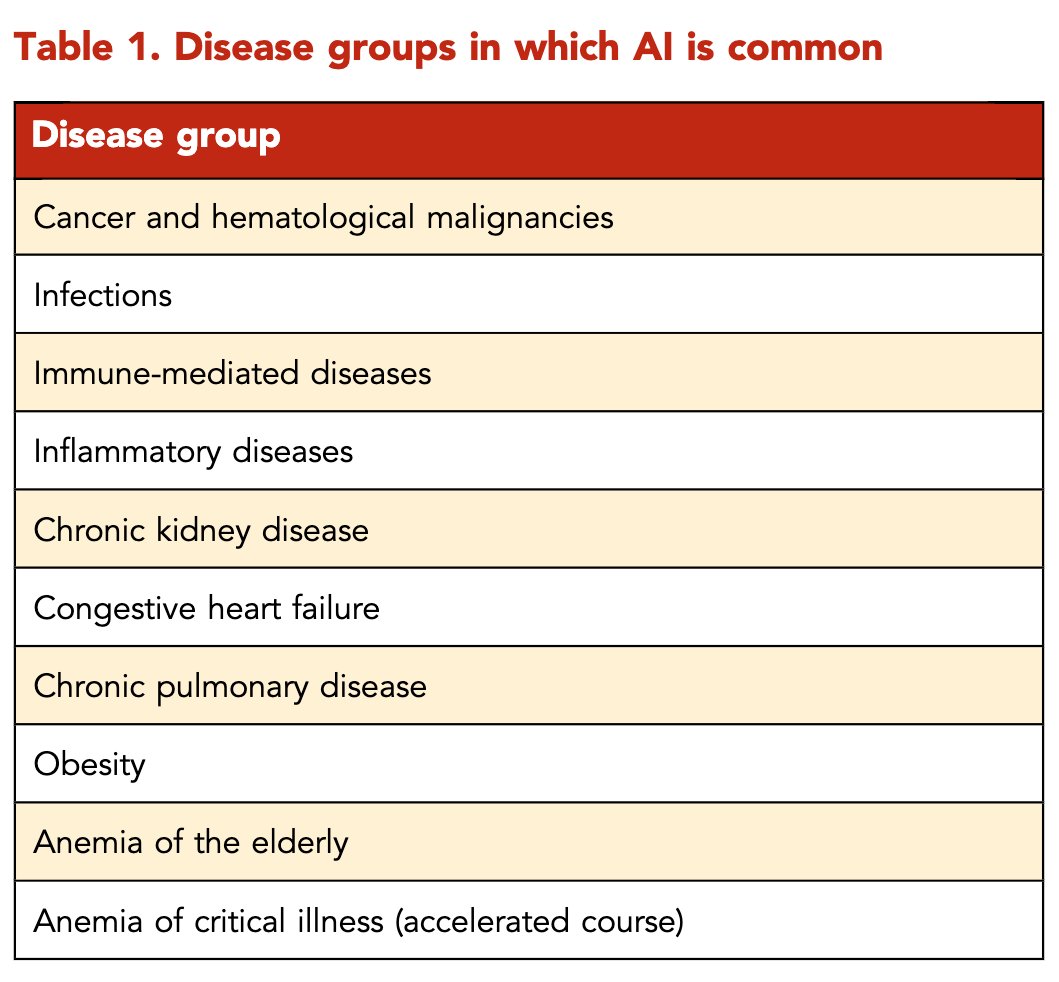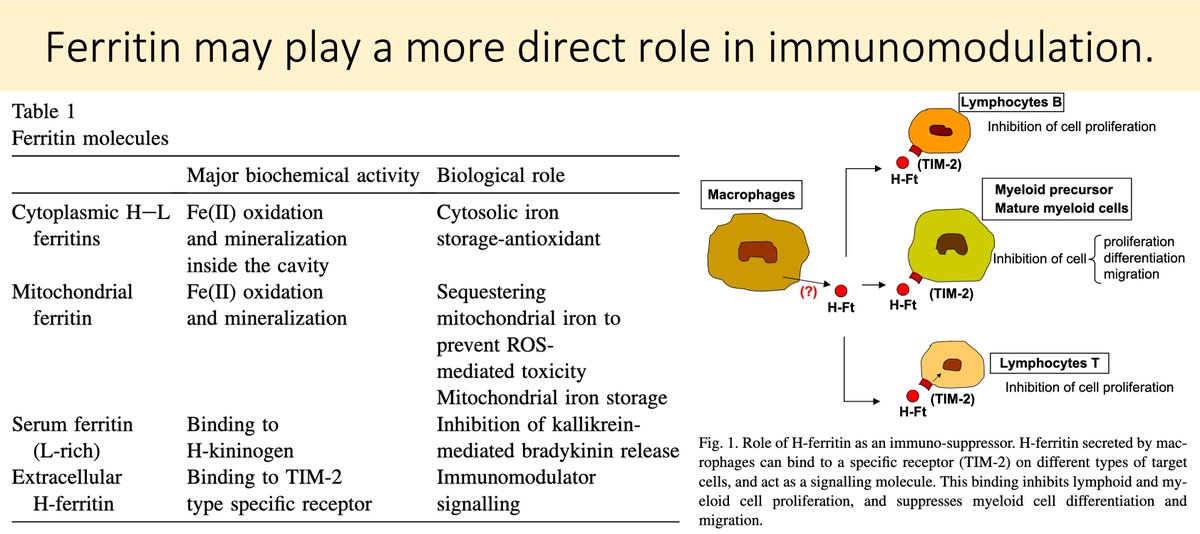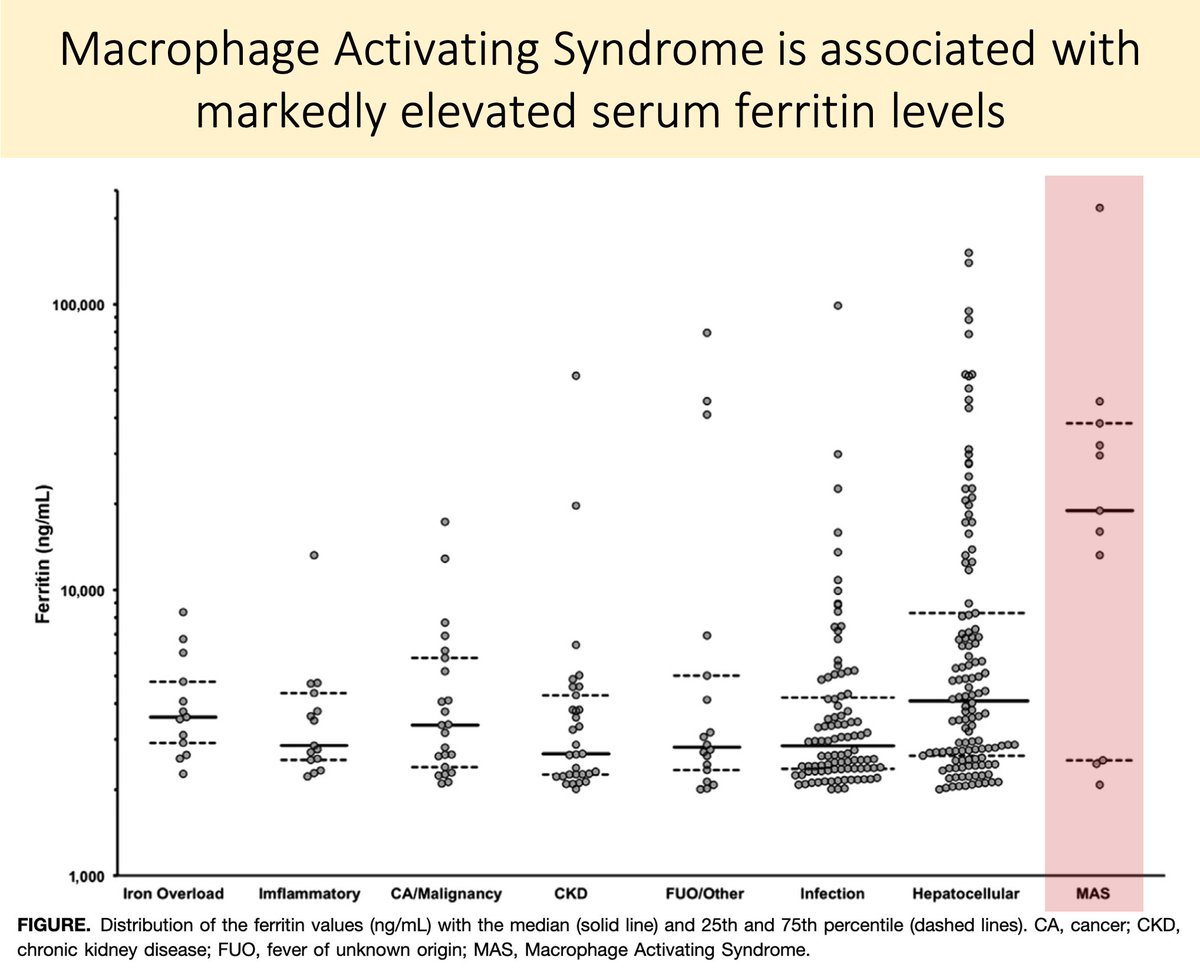1/13
Why is ferritin elevated in anemia of chronic inflammation?
If the evolutionary point was/is to keep iron away from bacteria, why is our main maker of iron stores elevated?
Why is ferritin elevated in anemia of chronic inflammation?
If the evolutionary point was/is to keep iron away from bacteria, why is our main maker of iron stores elevated?
2/
Let& #39;s start by reviewing a few key features of iron. First, recall that it has high redox potential. As a result, it is:
 https://abs.twimg.com/emoji/v2/... draggable="false" alt="🔳" title="Weißes Quadrat" aria-label="Emoji: Weißes Quadrat">Beneficial: Utilized for myriad cellular functions
https://abs.twimg.com/emoji/v2/... draggable="false" alt="🔳" title="Weißes Quadrat" aria-label="Emoji: Weißes Quadrat">Beneficial: Utilized for myriad cellular functions
And
 https://abs.twimg.com/emoji/v2/... draggable="false" alt="🔳" title="Weißes Quadrat" aria-label="Emoji: Weißes Quadrat">Potentially harmful: Creates damaging reactive hydroxide radicals
https://abs.twimg.com/emoji/v2/... draggable="false" alt="🔳" title="Weißes Quadrat" aria-label="Emoji: Weißes Quadrat">Potentially harmful: Creates damaging reactive hydroxide radicals
https://pubmed.ncbi.nlm.nih.gov/10787336/ ">https://pubmed.ncbi.nlm.nih.gov/10787336/...
Let& #39;s start by reviewing a few key features of iron. First, recall that it has high redox potential. As a result, it is:
And
https://pubmed.ncbi.nlm.nih.gov/10787336/ ">https://pubmed.ncbi.nlm.nih.gov/10787336/...
3/
Based on its role in cellular functions and its ability to cause cell and tissue damage, it is unsurprising that >99% of iron is intracellular.
And the iron that& #39;s extracellular is bound to proteins (e.g., transferrin).
https://pubmed.ncbi.nlm.nih.gov/10787336/ ">https://pubmed.ncbi.nlm.nih.gov/10787336/...
Based on its role in cellular functions and its ability to cause cell and tissue damage, it is unsurprising that >99% of iron is intracellular.
And the iron that& #39;s extracellular is bound to proteins (e.g., transferrin).
https://pubmed.ncbi.nlm.nih.gov/10787336/ ">https://pubmed.ncbi.nlm.nih.gov/10787336/...
4/
Next, let& #39;s review a few key features of ferritin. It is an amazing protein.
For one, it is a nanoCAGE! Basically, a hollow structure that can be filled with up to 4500 iron atoms.
By comparison, transferrin binds just two iron atoms.
https://pubmed.ncbi.nlm.nih.gov/18835072/ ">https://pubmed.ncbi.nlm.nih.gov/18835072/...
Next, let& #39;s review a few key features of ferritin. It is an amazing protein.
For one, it is a nanoCAGE! Basically, a hollow structure that can be filled with up to 4500 iron atoms.
By comparison, transferrin binds just two iron atoms.
https://pubmed.ncbi.nlm.nih.gov/18835072/ ">https://pubmed.ncbi.nlm.nih.gov/18835072/...
5/
Like iron, ferritin is largely intracellular.
Despite the relatively small amounts of ferritin in the serum, it still rises/falls with total body stores (as assessed by bone marrow biopsy). That& #39;s why we use it as a maker of iron status.
https://pubmed.ncbi.nlm.nih.gov/4825851/ ">https://pubmed.ncbi.nlm.nih.gov/4825851/&...
Like iron, ferritin is largely intracellular.
Despite the relatively small amounts of ferritin in the serum, it still rises/falls with total body stores (as assessed by bone marrow biopsy). That& #39;s why we use it as a maker of iron status.
https://pubmed.ncbi.nlm.nih.gov/4825851/ ">https://pubmed.ncbi.nlm.nih.gov/4825851/&...
6/
But, ferritin is an acute phase reactant. IL-1, IL-6, and other cytokines lead to an increase in synthesis by macrophages and hepatocytes.
And, iron is taken up by macrophages of the reticuloendothelial system. Once inside, the iron is "trapped".
https://pubmed.ncbi.nlm.nih.gov/15758012/ ">https://pubmed.ncbi.nlm.nih.gov/15758012/...
But, ferritin is an acute phase reactant. IL-1, IL-6, and other cytokines lead to an increase in synthesis by macrophages and hepatocytes.
And, iron is taken up by macrophages of the reticuloendothelial system. Once inside, the iron is "trapped".
https://pubmed.ncbi.nlm.nih.gov/15758012/ ">https://pubmed.ncbi.nlm.nih.gov/15758012/...
7/
Because iron is sequestered inside macrophages it is not readily available for RBC production.
Result: anemia of chronic inflammation (AI)
[Note: there are many other mechanisms contributing to AI. See the Pic/Link.]
https://pubmed.ncbi.nlm.nih.gov/18695181/ ">https://pubmed.ncbi.nlm.nih.gov/18695181/...
Because iron is sequestered inside macrophages it is not readily available for RBC production.
Result: anemia of chronic inflammation (AI)
[Note: there are many other mechanisms contributing to AI. See the Pic/Link.]
https://pubmed.ncbi.nlm.nih.gov/18695181/ ">https://pubmed.ncbi.nlm.nih.gov/18695181/...
8/
Why do we trap iron inside ferritin during inflammatory conditions?
Recall that bacteria have many of the same iron-requiring cellular functions (see Tweet 2). By trapping iron in ferritin nanocages, it keeps bacteria from using it against us. https://pubmed.ncbi.nlm.nih.gov/20711357/ ">https://pubmed.ncbi.nlm.nih.gov/20711357/...
Why do we trap iron inside ferritin during inflammatory conditions?
Recall that bacteria have many of the same iron-requiring cellular functions (see Tweet 2). By trapping iron in ferritin nanocages, it keeps bacteria from using it against us. https://pubmed.ncbi.nlm.nih.gov/20711357/ ">https://pubmed.ncbi.nlm.nih.gov/20711357/...
9/
Bacteria have evolved myriad ways to acquire iron from us (see Link).
Others have "simply" abandoned iron for other divalent metals!
 https://abs.twimg.com/emoji/v2/... draggable="false" alt="💥" title="Symbol für eine Kollision" aria-label="Emoji: Symbol für eine Kollision">Borrelia burgdorferi uses manganese
https://abs.twimg.com/emoji/v2/... draggable="false" alt="💥" title="Symbol für eine Kollision" aria-label="Emoji: Symbol für eine Kollision">Borrelia burgdorferi uses manganese
 https://abs.twimg.com/emoji/v2/... draggable="false" alt="💥" title="Symbol für eine Kollision" aria-label="Emoji: Symbol für eine Kollision">Lactobacillus uses manganese and cobalt
https://abs.twimg.com/emoji/v2/... draggable="false" alt="💥" title="Symbol für eine Kollision" aria-label="Emoji: Symbol für eine Kollision">Lactobacillus uses manganese and cobalt
https://pubmed.ncbi.nlm.nih.gov/30605903/ ">https://pubmed.ncbi.nlm.nih.gov/30605903/...
Bacteria have evolved myriad ways to acquire iron from us (see Link).
Others have "simply" abandoned iron for other divalent metals!
https://pubmed.ncbi.nlm.nih.gov/30605903/ ">https://pubmed.ncbi.nlm.nih.gov/30605903/...
10/
The mechanism responsible for iron restriction doesn& #39;t discern whether you have a bacterial infection or a non-infectious inflammatory condition (e.g., rheumatoid arthritis).
Both types of conditions can lead to an anemia of chronic inflammation.
https://pubmed.ncbi.nlm.nih.gov/30401705/ ">https://pubmed.ncbi.nlm.nih.gov/30401705/...
The mechanism responsible for iron restriction doesn& #39;t discern whether you have a bacterial infection or a non-infectious inflammatory condition (e.g., rheumatoid arthritis).
Both types of conditions can lead to an anemia of chronic inflammation.
https://pubmed.ncbi.nlm.nih.gov/30401705/ ">https://pubmed.ncbi.nlm.nih.gov/30401705/...
11/
But, ferritin& #39;s role in inflammation may extend beyond iron sequestration.
It has been shown to function as a signaling molecule and immune regulator.
https://pubmed.ncbi.nlm.nih.gov/18191543/ ">https://pubmed.ncbi.nlm.nih.gov/18191543/...
But, ferritin& #39;s role in inflammation may extend beyond iron sequestration.
It has been shown to function as a signaling molecule and immune regulator.
https://pubmed.ncbi.nlm.nih.gov/18191543/ ">https://pubmed.ncbi.nlm.nih.gov/18191543/...
12/
Recall that macrophages are the site of ferritin storage in inflammation.
It is therefore unsurprising that macrophage activation syndrome (and the related hemophagocytic lymphohistiocytosis) are associated with markedly elevated ferritin levels.
https://pubmed.ncbi.nlm.nih.gov/28864373/ ">https://pubmed.ncbi.nlm.nih.gov/28864373/...
Recall that macrophages are the site of ferritin storage in inflammation.
It is therefore unsurprising that macrophage activation syndrome (and the related hemophagocytic lymphohistiocytosis) are associated with markedly elevated ferritin levels.
https://pubmed.ncbi.nlm.nih.gov/28864373/ ">https://pubmed.ncbi.nlm.nih.gov/28864373/...
13/13
 https://abs.twimg.com/emoji/v2/... draggable="false" alt="💥" title="Symbol für eine Kollision" aria-label="Emoji: Symbol für eine Kollision">Iron is necessary for multiple cellular functions but can lead to free radical formation
https://abs.twimg.com/emoji/v2/... draggable="false" alt="💥" title="Symbol für eine Kollision" aria-label="Emoji: Symbol für eine Kollision">Iron is necessary for multiple cellular functions but can lead to free radical formation
 https://abs.twimg.com/emoji/v2/... draggable="false" alt="💥" title="Symbol für eine Kollision" aria-label="Emoji: Symbol für eine Kollision">Bacteria also use iron so we have evolved ways to hide it
https://abs.twimg.com/emoji/v2/... draggable="false" alt="💥" title="Symbol für eine Kollision" aria-label="Emoji: Symbol für eine Kollision">Bacteria also use iron so we have evolved ways to hide it
 https://abs.twimg.com/emoji/v2/... draggable="false" alt="💥" title="Symbol für eine Kollision" aria-label="Emoji: Symbol für eine Kollision">When inflamed (whether an infection or otherwise), our body sequesters iron within macrophages, raising ferritin levels
https://abs.twimg.com/emoji/v2/... draggable="false" alt="💥" title="Symbol für eine Kollision" aria-label="Emoji: Symbol für eine Kollision">When inflamed (whether an infection or otherwise), our body sequesters iron within macrophages, raising ferritin levels
There is a lot more to say about ferritin. I& #39;ll be posting additional - shorter - threads over the next few days to supplement this one.

 Read on Twitter
Read on Twitter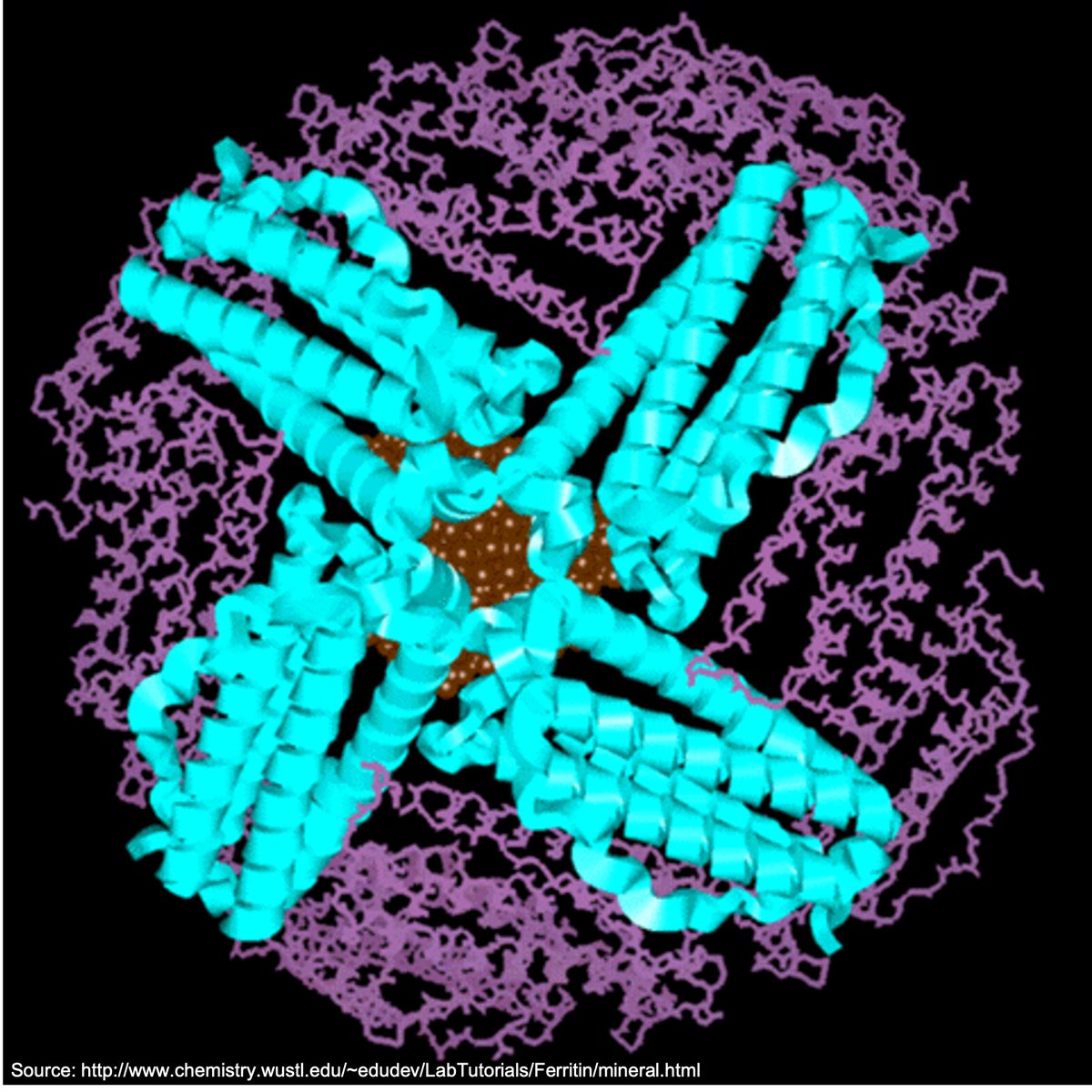
 Beneficial: Utilized for myriad cellular functionsAndhttps://abs.twimg.com/emoji/v2/... draggable="false" alt="🔳" title="Weißes Quadrat" aria-label="Emoji: Weißes Quadrat">Potentially harmful: Creates damaging reactive hydroxide radicals https://pubmed.ncbi.nlm.nih.gov/10787336/..." title="2/Let& #39;s start by reviewing a few key features of iron. First, recall that it has high redox potential. As a result, it is:https://abs.twimg.com/emoji/v2/... draggable="false" alt="🔳" title="Weißes Quadrat" aria-label="Emoji: Weißes Quadrat">Beneficial: Utilized for myriad cellular functionsAndhttps://abs.twimg.com/emoji/v2/... draggable="false" alt="🔳" title="Weißes Quadrat" aria-label="Emoji: Weißes Quadrat">Potentially harmful: Creates damaging reactive hydroxide radicals https://pubmed.ncbi.nlm.nih.gov/10787336/..." class="img-responsive" style="max-width:100%;"/>
Beneficial: Utilized for myriad cellular functionsAndhttps://abs.twimg.com/emoji/v2/... draggable="false" alt="🔳" title="Weißes Quadrat" aria-label="Emoji: Weißes Quadrat">Potentially harmful: Creates damaging reactive hydroxide radicals https://pubmed.ncbi.nlm.nih.gov/10787336/..." title="2/Let& #39;s start by reviewing a few key features of iron. First, recall that it has high redox potential. As a result, it is:https://abs.twimg.com/emoji/v2/... draggable="false" alt="🔳" title="Weißes Quadrat" aria-label="Emoji: Weißes Quadrat">Beneficial: Utilized for myriad cellular functionsAndhttps://abs.twimg.com/emoji/v2/... draggable="false" alt="🔳" title="Weißes Quadrat" aria-label="Emoji: Weißes Quadrat">Potentially harmful: Creates damaging reactive hydroxide radicals https://pubmed.ncbi.nlm.nih.gov/10787336/..." class="img-responsive" style="max-width:100%;"/>
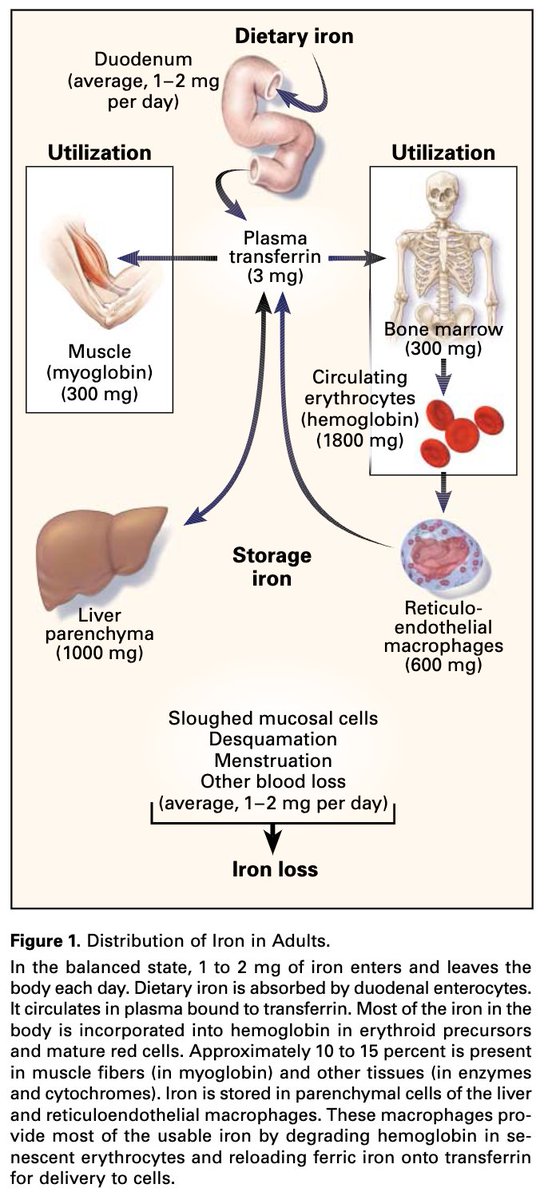
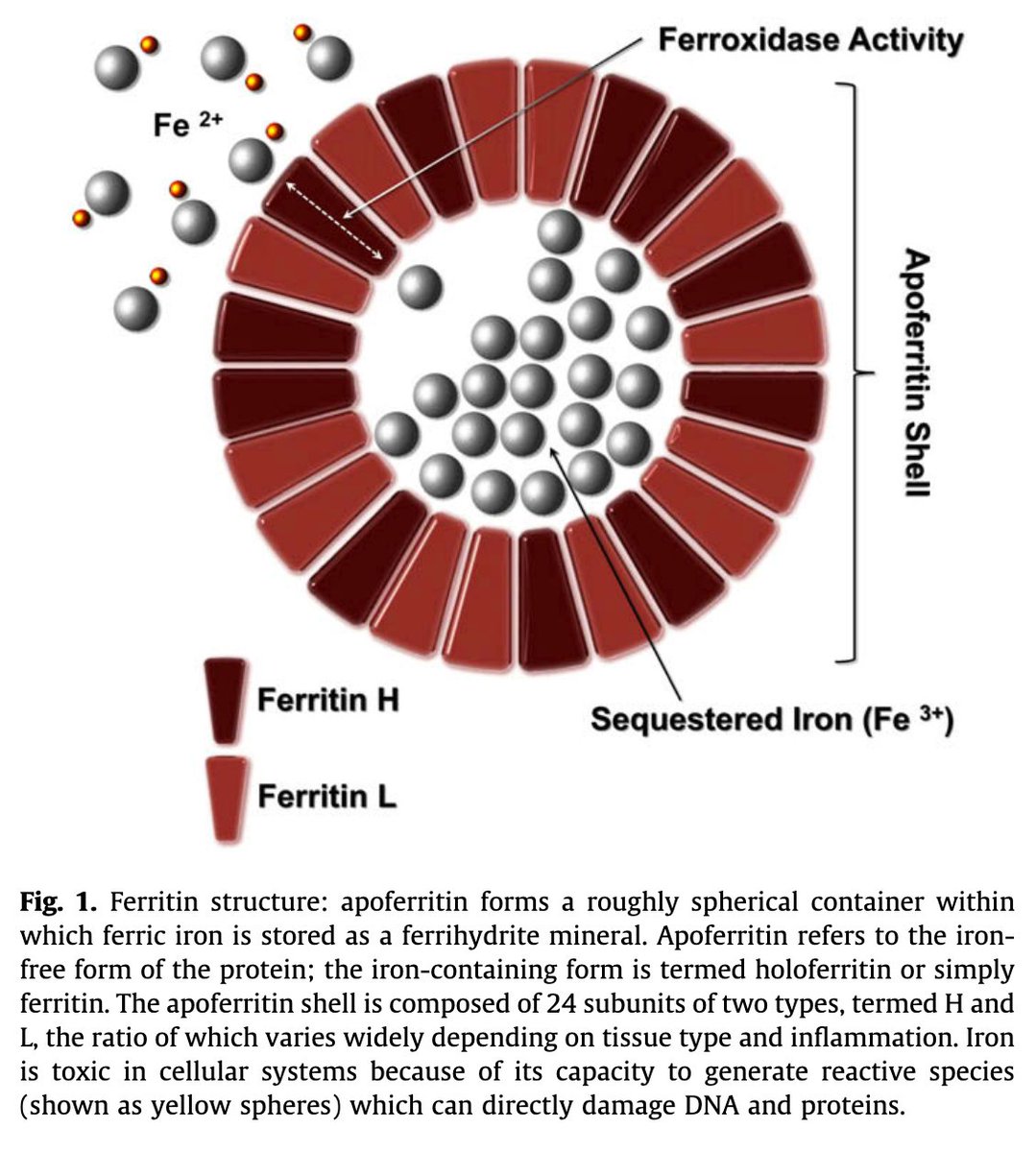
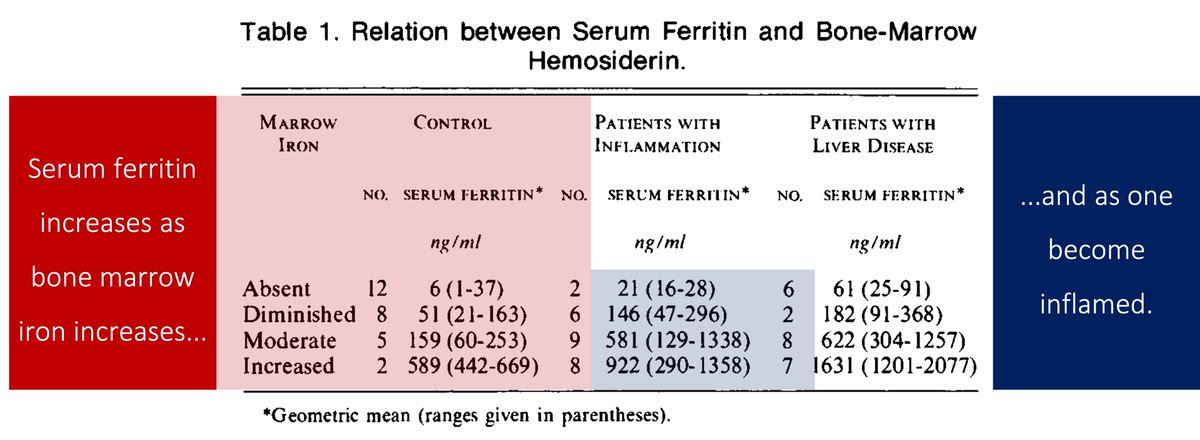
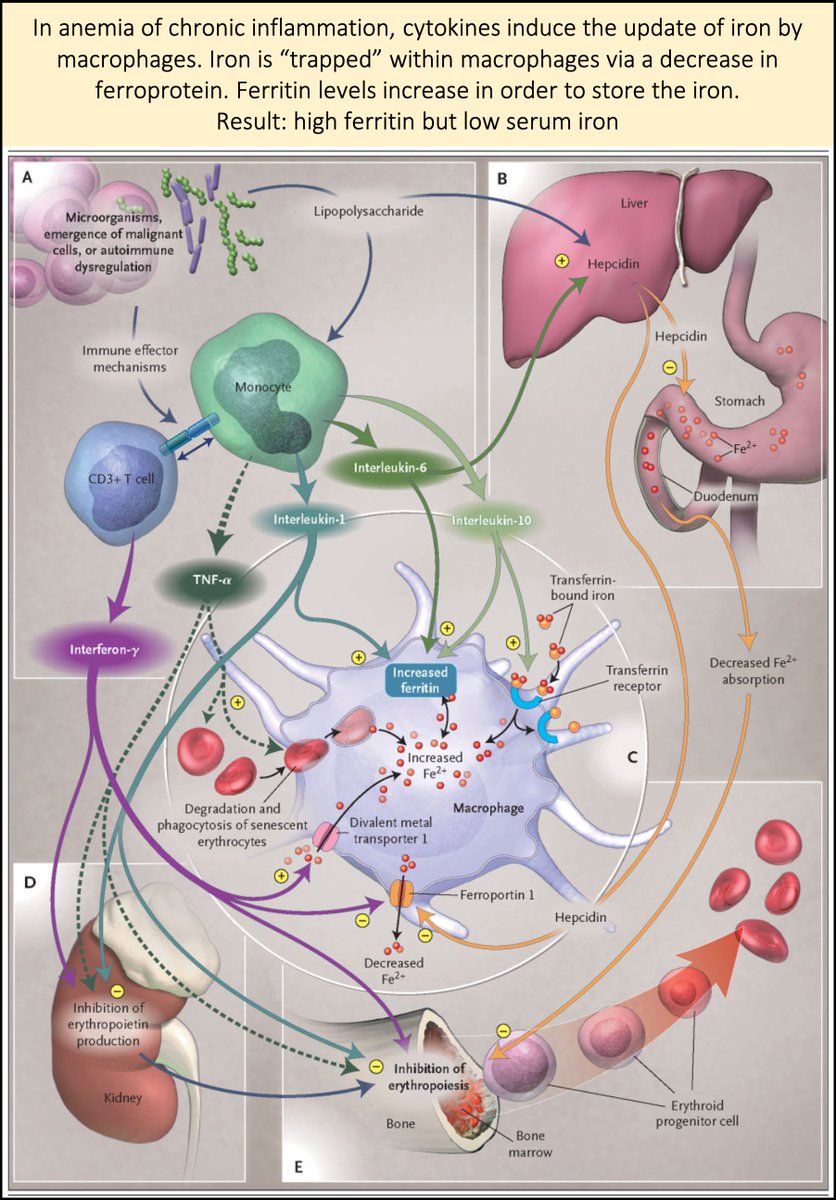
![7/Because iron is sequestered inside macrophages it is not readily available for RBC production.Result: anemia of chronic inflammation (AI)[Note: there are many other mechanisms contributing to AI. See the Pic/Link.] https://pubmed.ncbi.nlm.nih.gov/18695181/... 7/Because iron is sequestered inside macrophages it is not readily available for RBC production.Result: anemia of chronic inflammation (AI)[Note: there are many other mechanisms contributing to AI. See the Pic/Link.] https://pubmed.ncbi.nlm.nih.gov/18695181/...](https://pbs.twimg.com/media/EgnQ_K9XkAEGkn4.jpg)
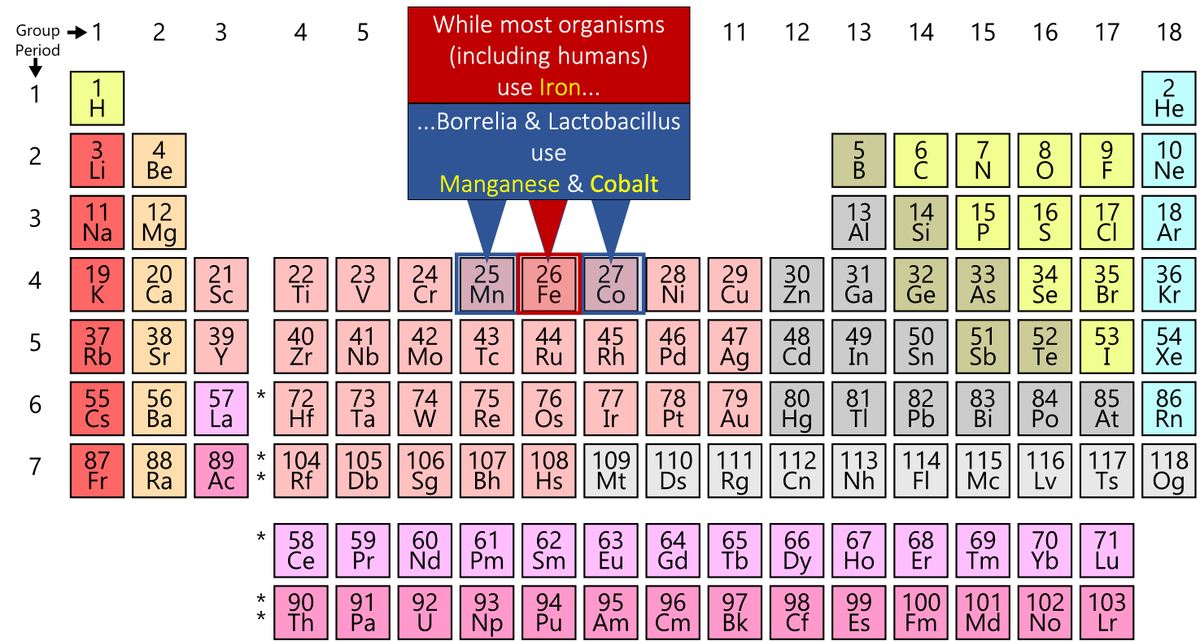 Borrelia burgdorferi uses manganesehttps://abs.twimg.com/emoji/v2/... draggable="false" alt="💥" title="Symbol für eine Kollision" aria-label="Emoji: Symbol für eine Kollision">Lactobacillus uses manganese and cobalt https://pubmed.ncbi.nlm.nih.gov/30605903/..." title="9/Bacteria have evolved myriad ways to acquire iron from us (see Link).Others have "simply" abandoned iron for other divalent metals!https://abs.twimg.com/emoji/v2/... draggable="false" alt="💥" title="Symbol für eine Kollision" aria-label="Emoji: Symbol für eine Kollision">Borrelia burgdorferi uses manganesehttps://abs.twimg.com/emoji/v2/... draggable="false" alt="💥" title="Symbol für eine Kollision" aria-label="Emoji: Symbol für eine Kollision">Lactobacillus uses manganese and cobalt https://pubmed.ncbi.nlm.nih.gov/30605903/..." class="img-responsive" style="max-width:100%;"/>
Borrelia burgdorferi uses manganesehttps://abs.twimg.com/emoji/v2/... draggable="false" alt="💥" title="Symbol für eine Kollision" aria-label="Emoji: Symbol für eine Kollision">Lactobacillus uses manganese and cobalt https://pubmed.ncbi.nlm.nih.gov/30605903/..." title="9/Bacteria have evolved myriad ways to acquire iron from us (see Link).Others have "simply" abandoned iron for other divalent metals!https://abs.twimg.com/emoji/v2/... draggable="false" alt="💥" title="Symbol für eine Kollision" aria-label="Emoji: Symbol für eine Kollision">Borrelia burgdorferi uses manganesehttps://abs.twimg.com/emoji/v2/... draggable="false" alt="💥" title="Symbol für eine Kollision" aria-label="Emoji: Symbol für eine Kollision">Lactobacillus uses manganese and cobalt https://pubmed.ncbi.nlm.nih.gov/30605903/..." class="img-responsive" style="max-width:100%;"/>
